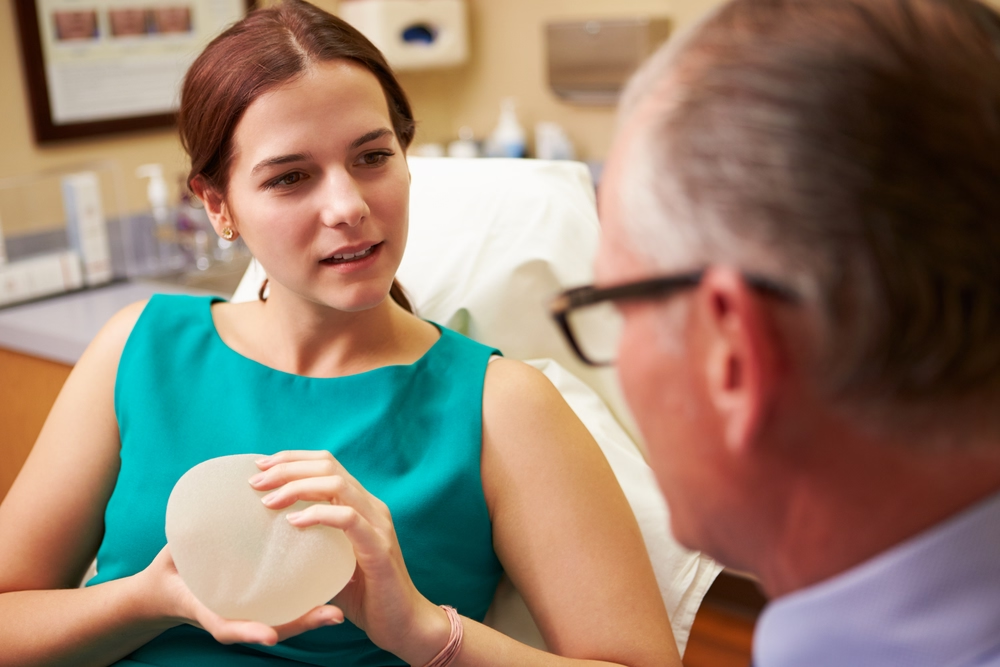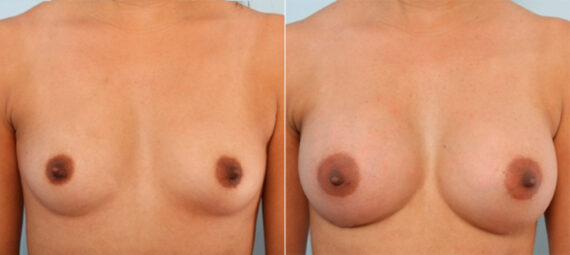Breast augmentation surgery often leads to some bruising around the breast implants and incision sites. Dr. Vitenas, an expert plastic surgeon, offers comprehensive guidance on managing these bruises effectively. He reveals how patients can navigate the recovery phase after their breast augmentation procedures, ensuring a smooth recovery and reducing the risk of complications.

Use cold compresses
In the initial hours after surgery, applying ice packs or cold compresses can significantly reduce swelling and bruising. Dr. Vitenas recommends using cold compresses intermittently – 20 minutes on and 20 minutes off. This practice helps constrict blood vessels, reducing blood flow to the area and minimizing bruising. However, it’s crucial not to apply ice packs directly onto the skin; instead, wrap them in a cloth to prevent skin damage.
Benefits of Cold Compresses:
- Reduces swelling
- Minimizes bruising
- Alleviates pain
- Supports Faster Healing
- Comfort and Soothing Effect
Elevate the Area
Elevation is key in the recovery process, especially in the first few days after surgery. Keeping the upper body elevated, even during sleep, can help reduce blood pressure in the breast area, thereby minimizing bruising and swelling. Dr. Vitenas suggests using pillows to comfortably elevate the upper body, promoting healthy blood circulation and aiding the healing process.
Use Over-the-Counter Pain Relievers
Post-operative care often involves managing discomfort. Over-the-counter pain medications can be effective in alleviating pain while reducing swelling and bruising. However, it’s essential to avoid blood thinners, as they can increase the risk of bleeding and bruising. Dr. Vitenas may prescribe medications specifically suited to your needs, and it’s crucial to follow his guidance on medication use during the recovery period.
Implement Gentle Massages
Gentle breast massage, as advised by Dr. Vitenas, can be beneficial in the weeks after surgery. This technique helps maintain the softness of the breast implants, promoting healthy blood circulation and potentially reducing the duration of bruising. It’s important to follow Dr. Vitenas’s instructions on the proper method and frequency of massage to prevent any damage to the breast implants.
Breast Augmentation Before & After Photos
Monitor and Protect the Bruised Area
Post-operative instructions from Dr. Vitenas include regular monitoring of the bruised area for any signs of hematoma after breast augmentation, which is a collection of blood that can occur around the implant. Protecting the area from further trauma and avoiding strenuous activities that can increase blood flow or pressure in the area is crucial for a healthy recovery.
Additional Advice and Precautions
Avoiding Certain Activities
Post-breast augmentation surgery, Dr. Vitenas strongly advises patients to modify their activity levels to ensure a healthy recovery. It’s imperative to avoid heavy lifting, weight lifting, and other forms of strenuous activities for several weeks following the procedure. These activities can significantly increase blood pressure and the risk of complications such as hematoma or excessive swelling.
Patients should aim to gradually reintroduce daily activities, prioritizing gentle exercise that does not strain the chest area. Activities like brisk walking can promote healthy blood circulation without compromising the healing process. It’s also essential to avoid any physical activity that involves bouncing or jarring the breasts, as this can affect the position of the breast implants and the overall healing process.
During the recovery phase, it’s important to listen to your body and not rush into resuming normal activities. Dr. Vitenas will provide specific guidance on when it’s safe to gradually increase physical activity and how to do so in a way that supports your recovery.
Recognizing Signs of Complications
After undergoing breast augmentation implant surgery, it is essential to remain vigilant for any signs of complications. Dr. Vitenas emphasizes this as a critical aspect of post-operative care. Here’s a structured approach to recognizing and responding to potential complications:
Early Indicators of Complications
- Extensive Bruising: While some bruising is expected, excessive or spreading bruising could indicate an underlying issue.
- Severe Pain: Pain that is not alleviated by prescribed pain medications or that intensifies over time requires immediate attention.
- Fluid Accumulation: Any signs of fluid build-up around the breast area could suggest complications like a hematoma or infection.
Signs Suggesting Breast Implant Complications
- Changes in Breast Shape or Size: Any sudden or unusual changes in the appearance of the breasts post-surgery should be promptly evaluated.
- Signs of Breast Implant Rupture: Look for any irregularities in the shape or feel of the implants, as these could be signs of rupture.
Monitoring and Responding to Symptoms
- Regular Check-Ups: Attend all scheduled follow-up appointments with Dr. Vitenas to ensure proper healing and address any concerns.
- Immediate Reporting: If any of the above symptoms are noticed, contact Dr. Vitenas’ office without delay. Timely medical intervention can be crucial.
Importance of Personalized Care
- Individual Variations: Keep in mind that each patient’s recovery process is unique. What is normal for one person may not be for another.
- Adherence to Post-Operative Instructions: Follow all instructions provided by Dr. Vitenas, as personalized care is vital for a successful recovery.
When to Consult Your Surgeon
Dr. Vitenas advises patients to maintain open communication throughout their breast augmentation experience. The consultation process, initial consultation, and one-on-one consultation are opportunities to discuss breast enhancement goals and understand the potential risks associated with the surgical procedure. Postoperative period care involves attending all scheduled follow-up appointments and adhering to post-operative instructions.
Schedule a Consultation with Dr. Vitenas
Choosing a qualified plastic surgeon like Dr. Vitenas is vital for your breast augmentation’s success. During the initial consultation, discuss your breast enhancement goals, the effects of breast augmentation, and any concerns about silicone implants or saline options. Dr. Vitenas will guide you through the surgical techniques, potential side effects, and the recovery timeline specific to your chosen type of implant.
FAQs
What Increases the Risk of Hematoma After Breast Surgery?
Factors like high blood pressure, use of blood thinners, and strenuous activities post-surgery can elevate the risk.
How Can I Differentiate Between Normal Bruising and a Hematoma?
A hematoma is usually more painful, larger, and harder than normal bruising. It may also cause significant swelling.
How Long Should I Expect Bruising to Last After My Surgery?
Bruising typically fades within 2-3 weeks. Persistent or worsening bruising should be evaluated by your surgeon.
Can Hematomas Affect the Outcome of My Breast Augmentation?
While rare, untreated hematomas can impact healing and the final appearance. Early treatment is crucial.
When Should I Seek Medical Attention for Bruising or Hematoma?
Seek immediate medical attention if you experience severe pain, rapid swelling, or changes in skin color around the breast area.


